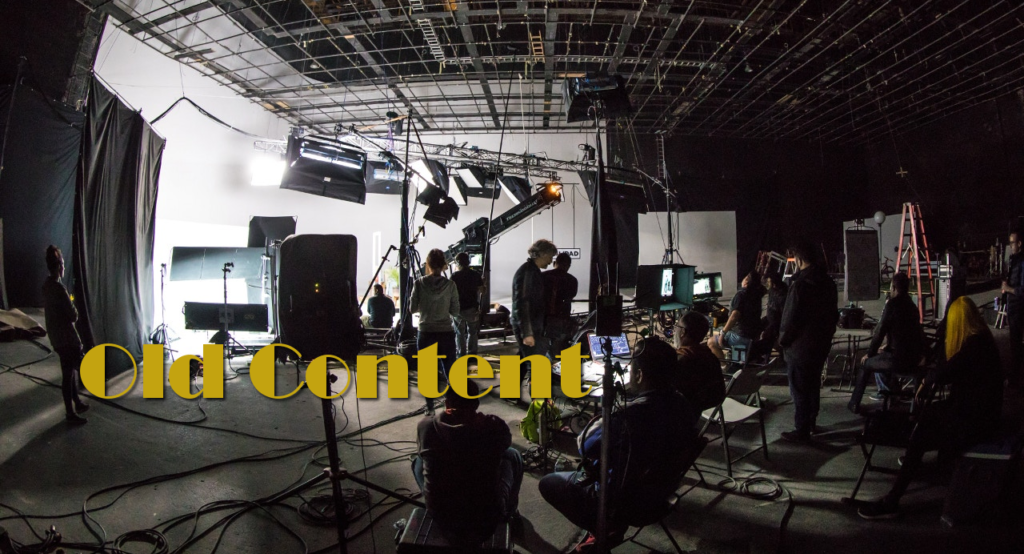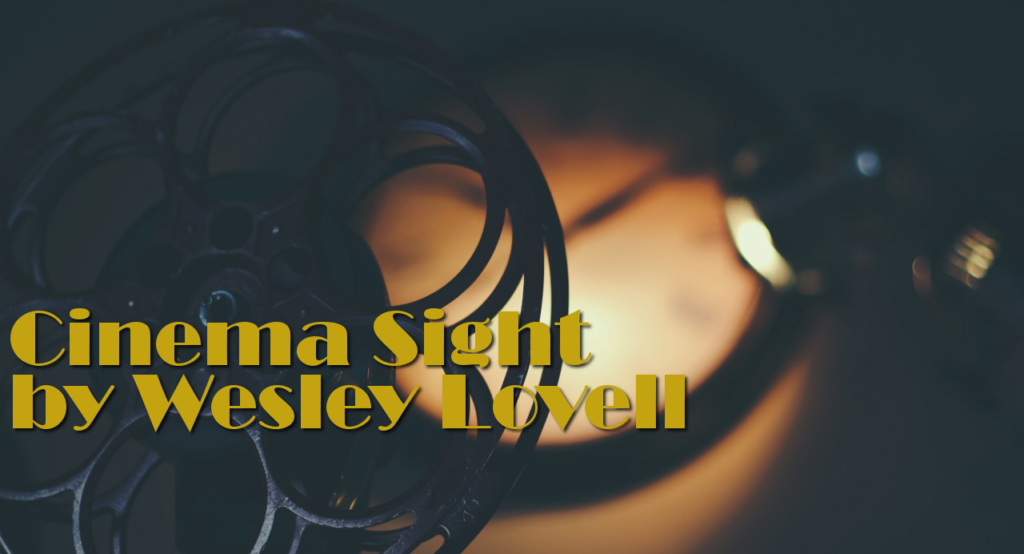 It wasn’t until after World War II ended that televisions became affordable. By the late 1940s, most homes in the U.S. had a 12-inch black-and-white TV set. Although most programming was live, TV stations also looked to old movies to fill the gap. By the early 1950s, you could find lots of movies from the minor studios. It wasn’t until later in the decade that major studios began to release their film catalogues to television stations that you could watch on your 21-inch set. By the mid-1960s, with the introduction of affordable color TVs, anything you could see in a movie theatre you could expect to eventually see at home on a 25-inch screen.
It wasn’t until after World War II ended that televisions became affordable. By the late 1940s, most homes in the U.S. had a 12-inch black-and-white TV set. Although most programming was live, TV stations also looked to old movies to fill the gap. By the early 1950s, you could find lots of movies from the minor studios. It wasn’t until later in the decade that major studios began to release their film catalogues to television stations that you could watch on your 21-inch set. By the mid-1960s, with the introduction of affordable color TVs, anything you could see in a movie theatre you could expect to eventually see at home on a 25-inch screen.
By the mid-1970s, the Japanese produced Betamax and VHS players that you could hook up to attach to your TV were invented, albeit out of reach for most consumers. By the early 1980s, with the growth of video rental stores, you could rent many of your favorite old movies and play them at home whenever you wanted. You could even purchase a used copy for an exorbitant price if you desired. Then music stores started selling brand-new copies of films for purchase. As the demand increased, prices went down. Laser disc players, which had been invented around the same time as the Betamax and VHS players, became available to consumers in 1984.
Laser discs, which were the size of long-playing records, were bulky and expensive, limiting their sale. Then in the late 1990s, the smaller and more affordable DVDs replaced laser discs as the premium media for home viewing that you could watch on your 35-inch or larger set.
In 2006, the clearer Blu-ray discs replaced standard DVDs as the media of choice. In the late 2010s, 4K UHD discs, which could only be viewed on 4K televisions, became the upscale mode of choice, preferably on a 50-inch or larger TV.
Where does it stop? When will the constant upgrading of films, many of which have seen VHS, DVD, and Blu-ray upgrades, end? Sooner than we thought, it turns out.
Now we can see 4K UHD upgrades of films directly on our TV screens, computers, and phones via streaming, which is engineered to put physical copies of films out of business. That is all well and good for as long as the streamers continue to make your favorite films available or allow you to copy and store them in their clouds. The only problem with storing anything in a cloud is the ability of the owner of the cloud to maintain it.
We’ve come full circle. If you want to have something you can see whenever you want to, you have to have a physical copy which will be good to play as long as your TV and player last. What happens, though, when players are no longer being manufactured or serviced and/or TVs no longer have connectable ports? Ah, the future. Enjoy what you have now, for as we know, all things come to an end at some point.
Looking back, here are a few highlights of what was available for home viewing over the years:
In the mid-1950s, The Wizard of Oz became the first major film to be shown annually on a TV network. It was shown in black-and-white, with many of its viewers having no idea the film switches from black-and-white to color when Dorothy’s house lands in Oz. It became a true revelation to those audience members when they were able to see it on their color TV sets beginning in the mid-1960s.
Other films that were shown repeatedly on TV over the years both before and after they became available on VHS, DVD, and other forms of physical media, include:
A Christmas Carol, both the 1938 MGM version starring Reginald Owen, and the 1951 British version starring Alistair Sim. Owen replaced Lionel Barrymore who had played it on radio for years but bowed out of the 1938 film due to his confinement to a wheelchair. Terry Kilburn, who played Tiny Tim, and June Lockhart, who played one of his sisters, are still with us in their late 90s, two of the longest-lived actors working in film in the 1930s.
It’s a Wonderful Life, which became a staple in the mid-1970s when it fell into public domain because Frank Capra forgot to renew the film’s copyright. James Stewart’s Everyman became one of the best loved screen characters of all time and audiences rediscovered Donna Reed as his wife and Henry Travers as his guardian angel along with Lionel Barrymore, Thomas Mitchell, Beulah Bondi, and others.
The Ten Commandments which has had more TV showings than any biblical epic, or for that matter, any epic period. Viewers have never been able to get enough of Charlton Heston as Moses parting the Red Sea. Audiences continue to be enthralled by Cecil B. DeMille’s epic which also stars Yul Brynner, Anne Baxter, Edward G. Robinson, Vincent Price, John Derek, Debra Paget, Yvonne De Carlo, Martha Scott, and Nina Foch.
The Sound of Music was at the time of its release in 1965 the most successful film of all time, not just in the U.S. but around the world. It was seen by multiple audiences several times in its initial release. Many critics considered that success to be due to the lack of strong competition at the box-office between 1965 and 1967. That was obviously not the case as the film continues to draw record audiences whenever it has been shown on TV.
Not shown in repeat viewings but memorable nonetheless:
Lawrence of Arabia is an example of a film that should never be watched on a small TV screen. Shown on TV in the 1970s for the first time on two nights with commercial breaks, the experience was met with puzzlement by viewers who had heard of the film but had never seen it. It left them wondering what all the fuss was about. Peter O’Toole, Omar Sharif, Alec Guinness, Anthony Quinn et. al. must be seen on a large screen.
Gone with the Wind has not had a lot of TV showings, but every showing it has had has been a major event as have both its initial release and the many theatrical re-releases that it had had over the years. Audiences still sit in awe at the scope of the film and the performances of Clark Gable, Vivien Leigh, Leslie Howard, Olivia de Havilland, Hattie McDaniel, Butterfly McQueen, and more.
My own earliest memories of seeing great films on TV for the first time include John Ford’s The Grapes of Wrath and How Green was My Valley, and Joseph L. Mankiewicz’s All About Eve. What are yours?
Happy Viewing.



















Leave a Reply